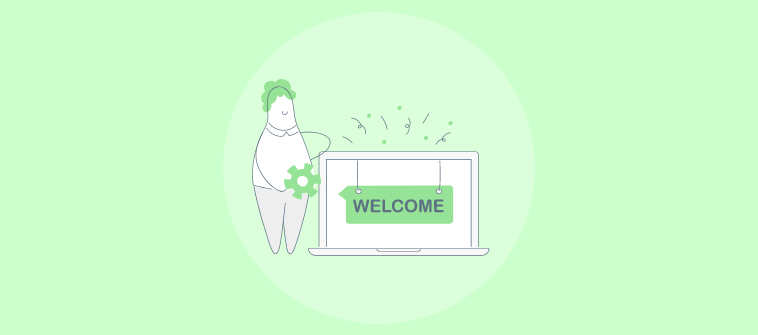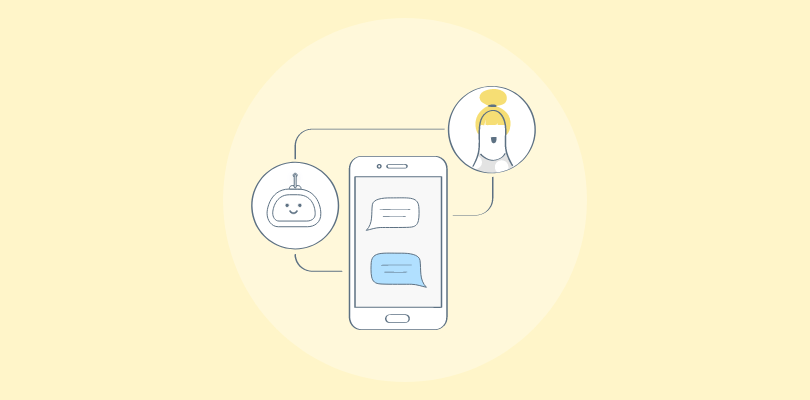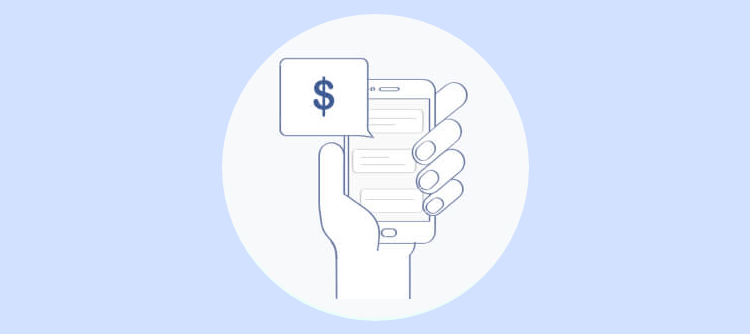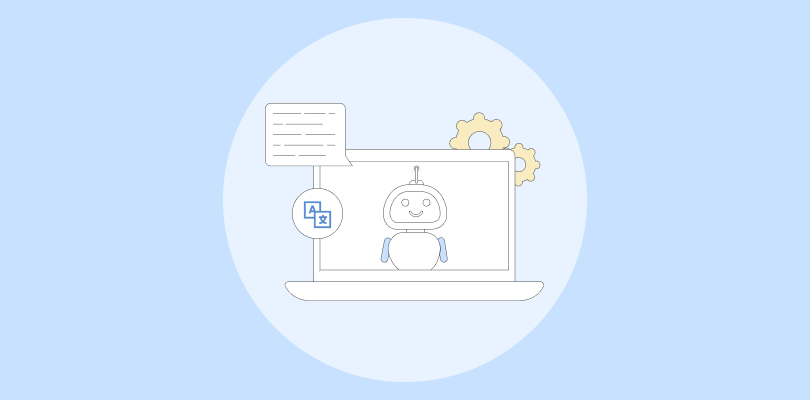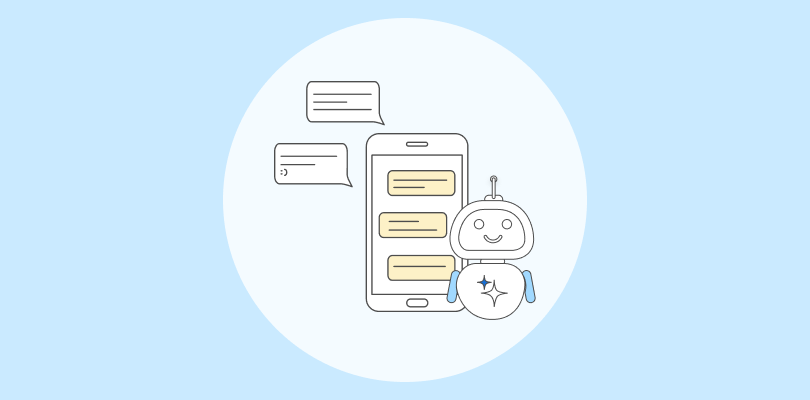Imagine capturing leads automatically—sounds too good to be true, right?
Well, with AI lead generation chatbots, it’s a reality!
These smart digital assistants are designed to engage visitors in real-time, providing immediate answers to their questions, guiding them through the purchasing process, and capturing valuable leads at any time of day or night.
Studies show that businesses using chatbots experience up to a 67% increase in lead generation, thanks to their 24/7 availability, which not only improves the customer experience but also boosts conversion rates significantly.
In this blog, we’ll discuss the benefits, successful examples, and future trends of lead generation chatbots that can transform your marketing strategy. So, stay tuned!
What is Lead Generation Chatbot?
A lead generation chatbot is an automated conversational tool used to engage website visitors and capture their information. It acts as a virtual assistant, interacting with potential customers 24/7, even outside of business hours. By asking qualifying questions, it helps identify and filter leads based on their needs and interests.
These chatbots initiate conversations, gather data, and provide relevant information to guide prospects through the sales funnel. They can answer frequently asked questions, schedule appointments, and even qualify leads based on predefined criteria. This personalized experience enhances engagement and encourages visitors to share their contact details.
To put it simply, lead generation chatbots streamline the lead qualification process, saving time and resources for businesses. By nurturing leads and providing valuable support, they contribute to increased conversion rates and drive business growth.
What are the Advantages of Lead Generation AI Chatbot?
AI chatbots for lead generation are not just a passing trend; they are essential tools that can significantly boost your marketing efforts. Here are some of the tangible benefits these chatbots offer:
Instant Engagement
Lead generation chatbots provide immediate responses to visitors, eliminating the frustration of waiting for customer support. By engaging users right away, chatbots can address inquiries, guide them through your offerings, and enhance their experience on your website. This prompt interaction can significantly reduce bounce rates, as users are more likely to stay engaged when their questions are answered in real time.
24/7 Availability
Unlike traditional sales teams, chatbots can operate around the clock, ensuring your business is always accessible to potential leads. Whether it’s day or night, weekends, or holidays, a chatbot can handle inquiries, capture leads, and provide information, allowing you to reach audiences across different time zones and maximizing lead generation opportunities.
Personalized User Experience
Through the use of advanced algorithms and AI, lead generation chatbots can deliver personalized interactions based on user behavior and preferences. They can tailor their questions and responses, creating a unique experience for each visitor. For example, by analyzing past interactions or the user’s browsing history, the chatbot can suggest relevant products or services, fostering a deeper connection and increasing the likelihood of conversion.
Automated Lead Qualification
Chatbots can streamline the lead qualification process by asking essential questions to assess the potential value of each lead. They can gather information such as the user’s needs, budget, and timeline, filtering out unqualified leads and ensuring that only those with a higher likelihood of conversion are passed on to your sales team.

This automation saves time and resources, allowing your team to focus on high-priority leads.
Cost Efficiency
Implementing chatbots can lead to substantial cost savings for businesses. By automating routine tasks—such as answering frequently asked questions or guiding users through the sales process—companies can reduce the need for a large customer service team. This allows businesses to reallocate resources toward more strategic initiatives.
What’s even better is that some chatbot platforms provide a forever-free plan, allowing businesses to access essential features without any cost.
Higher Conversion Rates
Engaging users in real time and providing tailored information can significantly improve conversion rates. Chatbot tools can use persuasive techniques, such as offering exclusive promotions or guiding users to complete purchases, to encourage decision-making. Studies have shown that businesses using chatbots for lead generation often see higher conversion rates compared to those relying solely on traditional forms like contact forms or email sign-ups.
Seamless Integration
Many lead generation chatbots can easily integrate with existing CRM systems, email marketing platforms, and other sales tools. This seamless integration allows for automatic data transfer, enabling your sales team to track and manage leads efficiently.
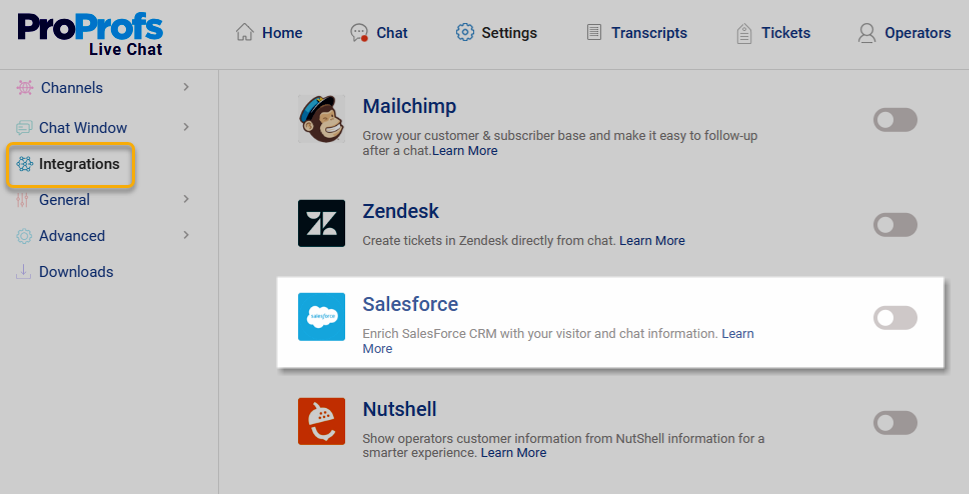
Furthermore, chatbots can facilitate nurturing campaigns by sending follow-up messages or scheduling appointments, ensuring that no lead falls through the cracks and improving your overall sales process.
Scalability
As businesses grow, their lead generation efforts must evolve accordingly. Chatbots provide a scalable solution that can handle increasing volumes of inquiries without requiring significant additional resources. Whether a business experiences seasonal spikes in traffic or a steady increase in customer interest, chatbots can effortlessly adjust to meet demand. This scalability ensures that lead generation efforts remain consistent and effective, regardless of the business’s growth stage.
With these robust advantages, businesses can level up their lead generation strategies, optimize how they connect with customers, and secure ongoing growth and increased profits.
How can AI Chatbots Help Generate Leads?
AI chatbots can be incredibly effective at generating leads for your business. Here’s how:
Engage Anytime, Anywhere
Imagine your website having a tireless, friendly employee who’s always ready to greet and assist visitors, no matter the time of day or night. That’s exactly what an AI chatbot does. It actively engages visitors by initiating conversations, answering questions, and providing instant support.
This constant availability means that potential customers are never left waiting for assistance, significantly enhancing their experience. By maintaining engagement, chatbots reduce bounce rates and encourage visitors to explore your offerings further, ultimately increasing the likelihood of lead conversion.
Qualifying Leads
A chatbot doesn’t just chat; it employs intelligent algorithms to ask targeted questions that help gauge the visitor’s needs and interests. For instance, it might inquire about the type of product a visitor is interested in or their budget.
This process filters out casual browsers from those who are genuinely interested, allowing your team to concentrate their efforts on the hottest leads. By efficiently qualifying leads, chatbots ensure that your sales team spends their time on prospects with a higher chance of converting.
Capturing Information
While engaging visitors, the chatbot subtly collects valuable information, such as their name, email address, phone number, and specific requirements. This data is essential for your sales team, providing a foundation for personalized follow-up interactions.
By gathering information in a conversational manner, chatbots create a more comfortable experience for visitors, who may be more willing to share their details when approached by a friendly assistant. This information can be stored in your CRM system, enabling targeted marketing efforts and more effective outreach.
Nurturing Leads
A chatbot can continue the conversation even after the initial interaction has ended. It can send follow-up messages based on previous interactions, provide relevant information about your products or services, and offer personalized recommendations.
For example, if a visitor shows interest in a particular product, the chatbot can send them additional details, testimonials, or even promotional offers. This nurturing process keeps potential customers engaged and moving down the sales funnel, increasing the chances of conversion and ensuring that they feel valued throughout their journey.
Seamless Handoff
When a lead is ready for a human touch, the chatbot can seamlessly transfer them to your sales team. This transition is crucial; it ensures that the customer experience remains smooth and uninterrupted.
By providing context and sharing the information collected during the conversation, the chatbot allows the sales team to pick up where the chatbot left off. This seamless handoff prevents potential customers from feeling lost or neglected, increasing the likelihood that they will proceed with their purchase.
What are some Successful Examples of Lead Generation Chatbots?
Want to learn how successful brands use lead generation chatbots to grow their business?
Here are two real-life examples worth reading:
LEGO’s Ralph
LEGO’s chatbot, Ralph, helps generate leads by guiding customers through a personalized gift-finding experience. By asking questions about the recipient’s age, interests, and budget, the chatbot provides tailored recommendations, improving customer satisfaction.
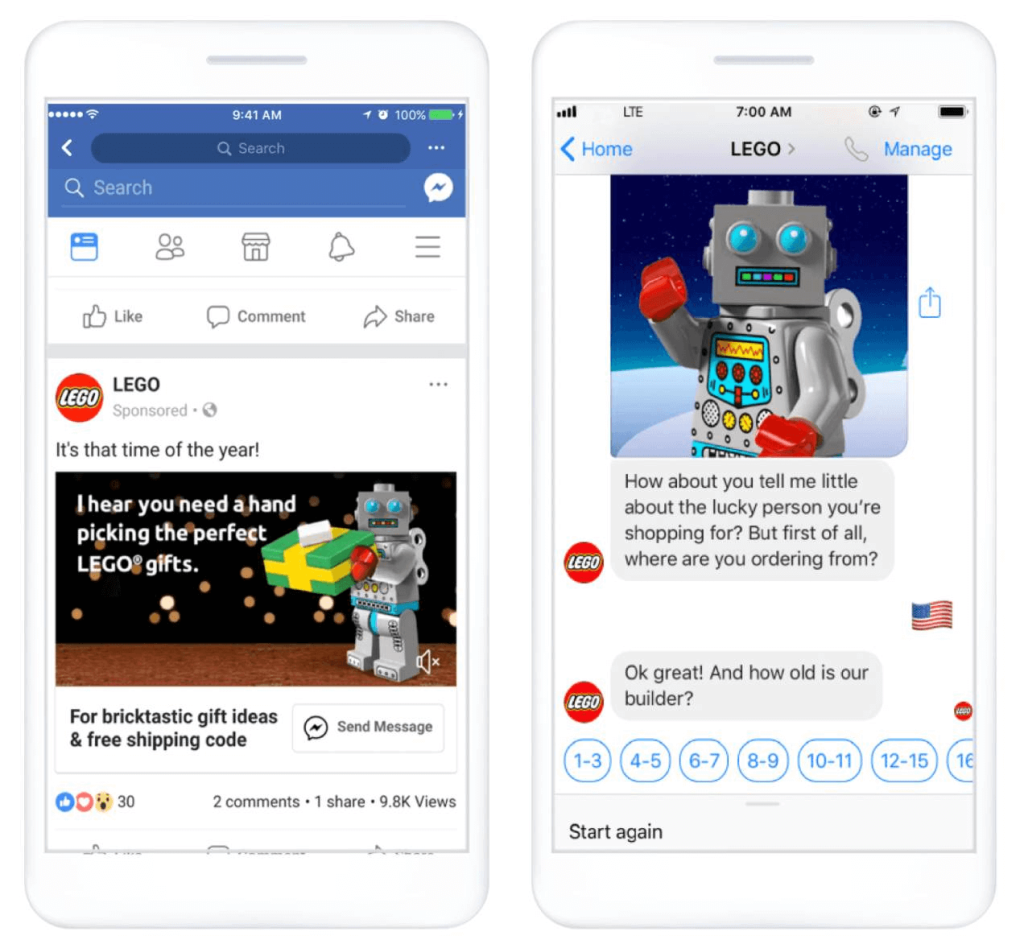
In the process, Ralph collects valuable contact information, enabling LEGO to boost conversions and nurture leads with targeted follow-ups and promotions.
Domino’s Pizza Ordering Bot
Domino’s interactive chatbot, Dom, simplifies the ordering process by being accessible across multiple platforms, including Facebook Messenger, Google Assistant, and Amazon Alexa. Dom collects order preferences and contact details, building an easy ordering experience that also provides the brand with essential lead data for future promotions.
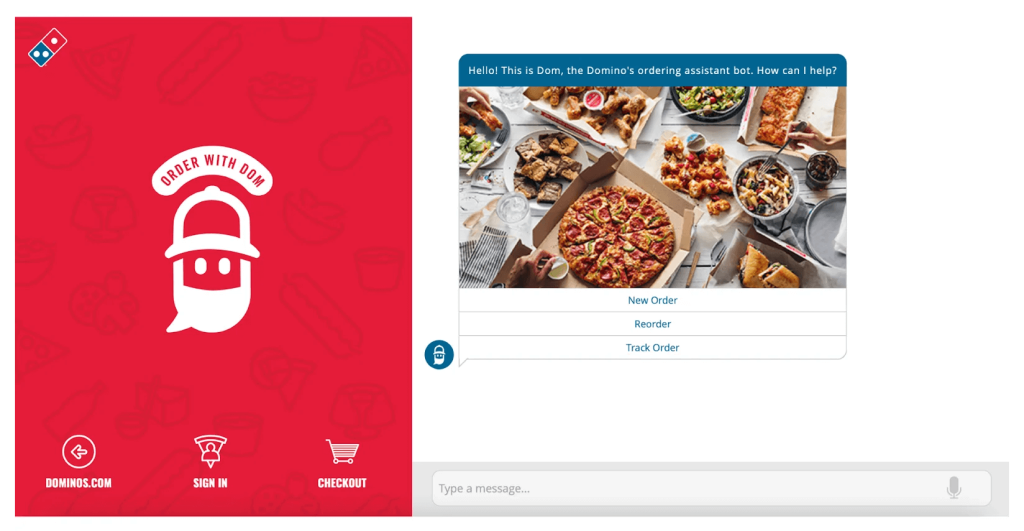
This convenient and engaging experience enhances customer satisfaction while providing Domino’s with valuable data on customer preferences and ordering habits.
FREE. All Features. FOREVER!
Try our Forever FREE account with all premium features!
What are the Future Trends in AI Lead Generation Chatbots?
The future of lead generation chatbots is brimming with possibilities, driven by rapid advancements in artificial intelligence and natural language processing. Here are some key trends to watch:
The Rise of Hyper-Personalization
Chatbots will evolve beyond basic personalization, utilizing AI to analyze vast amounts of data, including individual preferences, past interactions, browsing history, and real-time behavior. This will allow for highly tailored conversations, dynamic content adjustments, and proactive recommendations that resonate with each potential customer on a deeper level. Imagine a chatbot that not only remembers your name but also anticipates your needs and offers solutions before you even ask.
Seamless Omnichannel Engagement
Future chatbots will seamlessly integrate across all communication channels, including websites, social media platforms, email, and messaging apps. This creates a consistent and unified brand experience for customers, allowing them to interact with your business on their preferred platform. A chatbot might initiate a conversation on your website, then seamlessly transition to WhatsApp or Facebook Messenger based on the user’s preference, ensuring no lead is lost due to channel switching.
The Emergence of Voice-Activated Chatbots
With the increasing popularity of voice search and smart speakers, voice-activated chatbots will become more prevalent. These chatbots will enable natural and effortless interactions, allowing users to engage with businesses conversationally. Imagine a prospect qualifying themselves through a voice-based chatbot while driving or completing other tasks, making lead generation even more convenient and accessible.
Infusing Chatbots with Emotional Intelligence
Future chatbots will be equipped with emotional intelligence, enabling them to understand and respond to human emotions expressed through text or voice. This will create more empathetic and human-like interactions, building trust and rapport with potential customers. A chatbot that can sense frustration or hesitation can adjust its communication style accordingly, providing reassurance and increasing the likelihood of lead conversion.
Leveraging Predictive Analytics for Proactive Engagement
By analyzing data from past interactions and user behavior patterns, chatbots will be able to predict future customer needs and proactively offer solutions. This will enable businesses to anticipate lead requirements and deliver personalized recommendations, increasing engagement and conversion rates. Imagine a chatbot that identifies a potential customer’s pain points based on their browsing history and proactively offers relevant resources or product demos, guiding them towards a solution.
Integrating Chatbots with AR/VR for Immersive Experiences
Chatbots could be integrated with augmented reality (AR) and virtual reality (VR) technologies to create immersive and interactive experiences for potential customers. This could involve virtual product demos, interactive tours of facilities, or personalized consultations with virtual assistants. Imagine a chatbot that guides a prospect through a virtual tour of a property or allows them to try on clothes virtually, enhancing engagement and providing a memorable brand experience.
Adopting these future trends allows businesses to harness the power of AI chatbots to generate high-quality leads, nurture them effectively, and drive sustainable growth.
Step-By-Step Process to Build AI Chatbot for Lead Generation With ProProfs Chat
Building an AI chatbot for lead generation is an exciting journey that can transform how your business interacts with potential customers. Let’s explore the step-by-step process to create an effective lead generation chatbot with ProProfs Chat.
Step 1: Start Creating Your Bot
First, head over to the “Bots” section on your dashboard. Then, click the “+Create New Bot” button and select “Using AI” from the dropdown menu.
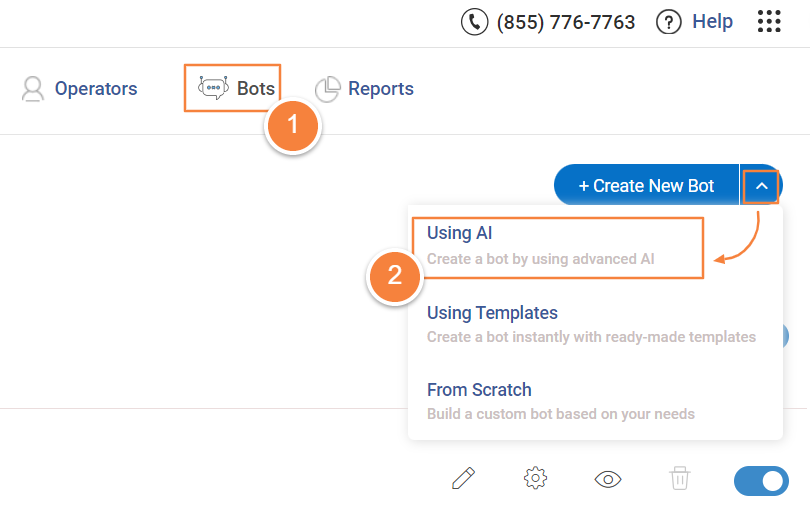
Here, you’ll need to enter the information that your bot will use to learn and engage with users.
Step 2: Set Up Your Bot with Data
Now it’s time to get your bot ready! You have two easy options to do this:
- URL: Just enter your website URL, and ProProfs Chat’s AI will check it out to grab important info like FAQs, product details, and contact info.
- Text: If you prefer, you can also type in text manually from a help page, website, or document. This is a great way to include specific instructions or policies you want your bot to share.

After choosing your data source and entering the details, click “Process Data” to continue.
All the important info from your website is now organized and easy for your bot to access. ProProfs AI takes your website data and turns it into useful questions and answers, so the bot can respond to customer inquiries effectively.
Your lead generation chatbot is all set and ready to chat!
Step 3: Click “Preview” to test and interact with your newly created AI chatbot.
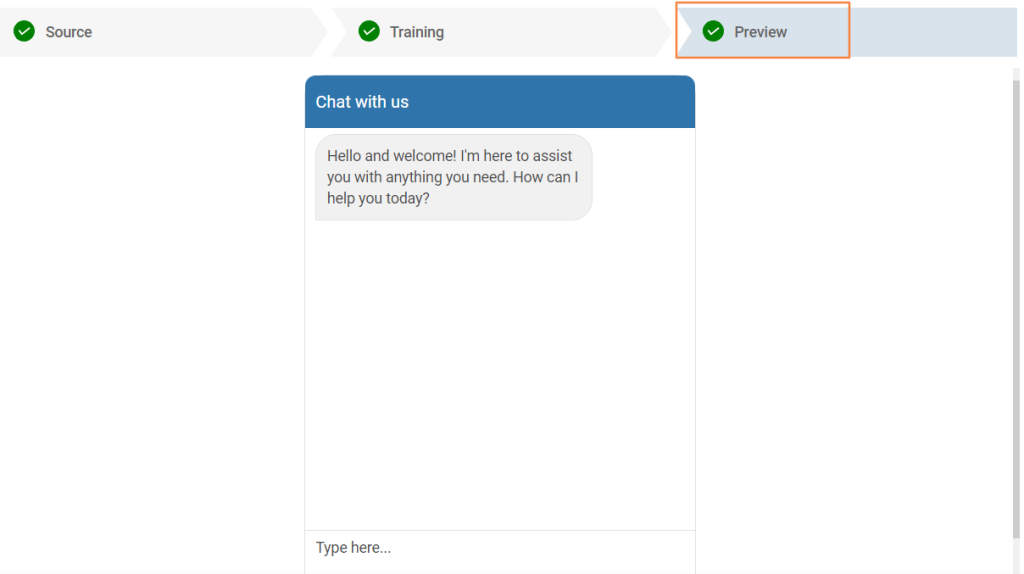
Congrats! Your lead generation AI chatbot is all set! Now, you’re ready to connect with visitors, answer their questions, and capture valuable leads 24/7. See? Building an AI chatbot for lead generation is that simple!
Capture Leads & Drive Sales With the Best AI Chatbot!
Lead generation chatbots offer businesses a modern solution for engaging with potential customers and capturing leads efficiently. They simplify the sales process by automating key interactions, allowing sales teams to focus on closing deals.
If you are still looking for the best chatbot for lead generation, ProProfs Chat comes highly recommended.
Why? First and foremost, it can significantly enhance your ability to engage potential customers and capture valuable leads. With its user-friendly drag-and-drop builder, you can effortlessly create a customized chatbot in just minutes—no coding experience required!
Plus, it offers a FREE plan, allowing you to explore its features without any financial commitment.
Sign up today for a budget-friendly lead generation chatbot that drives growth!
Learn More About Lead Generation Chatbots: FAQs
Are lead generation chatbots effective for B2B and B2C?
Yes, lead generation chatbots are effective for both B2B (Business-to-Business) and B2C (Business-to-Consumer) models. In B2C, chatbots help engage customers directly, answer queries, and facilitate purchases. In B2B, they can qualify leads, schedule meetings, and provide valuable information, making them essential tools for nurturing relationships and driving sales.
How can I measure the ROI of a lead generation chatbot?
To measure the ROI of a lead generation chatbot, track key metrics such as the number of leads generated, conversion rates, customer engagement levels, and the cost of the chatbot compared to the revenue it generates. You can also assess how much time and resources the chatbot saves your sales team by automating repetitive tasks.
What common mistakes should I avoid when implementing a lead generation chatbot?
Common mistakes to avoid include failing to design an intuitive and user-friendly interface can frustrate users and drive them away. Chatbots should provide concise and clear responses. Avoid making interactions too complex or lengthy. Ensure that your chatbot integrates seamlessly with your CRM and other marketing tools to track leads effectively. Generic responses can diminish engagement. Use data to personalize interactions based on user behavior and preferences. Implement processes for following up with leads after the chatbot interaction to maximize conversion opportunities.
How much customization is needed to make a lead generation chatbot effective?
The level of customization needed for an effective lead generation chatbot depends on your business goals and audience. Basic customization includes defining the chatbot's tone, language, and branding to align with your business identity. Advanced customization involves programming the chatbot to ask specific qualifying questions, integrating with your existing systems (like CRM), and analyzing user behavior to improve interactions.
FREE. All Features. FOREVER!
Try our Forever FREE account with all premium features!

 We'd love your feedback!
We'd love your feedback!
 Thanks for your feedback!
Thanks for your feedback!



